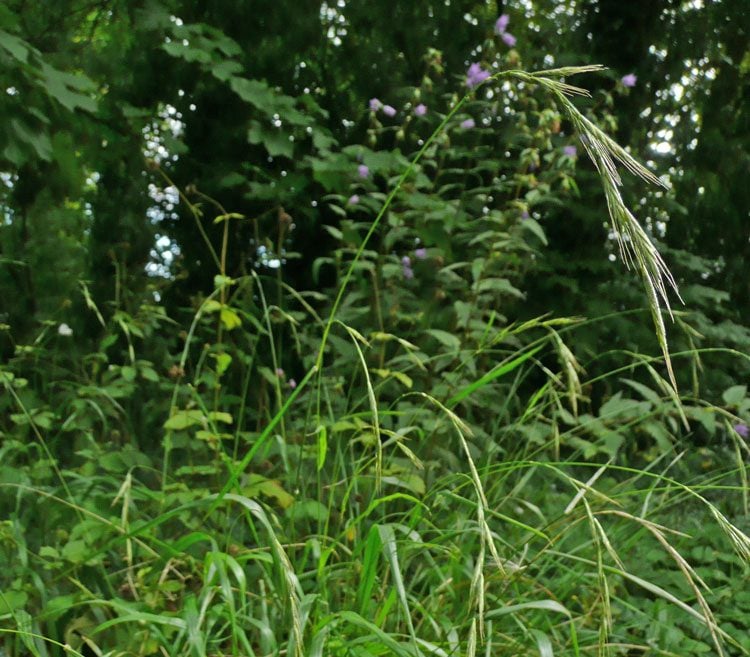Description
False brome, also known as wood brome or wood false-brome, is a perennial grass which typically grows in shade as distinct tufts or clumps of long wide flat green leaves which droop down at the edges of the tufts. It is quite an ornamental grass. The foliage tufts are typically up to 30 cm height. The flowering stems arch up out of the tufts to 90cm with drooping heads which can persist into winter in sheltered positions. The quantity of flowering shoots produced each year depends on light levels and can be quite sparse in deeper shade.
Habitat Information
False brome is predominantly a plant of woodland and other shady habitats, including hedgerows, railway banks and roadsides. It prefers well-drained neutral to calcareous soils. It can be found growing in more open situations in grassland particularly on chalk and limestone with a past history or association with woodland and scrub habitat.
Growing Information
False brome seed can be sown at any time of the year when soil conditions are suitable.
It is a relatively slow growing grass, particularly in shade, and so can take time to fully establish from seed. When sown as a minor component of a shade mixture initial ground cover will be provided by other companion grass species. Over time, with the effects of shading and leaf fall, false brome will become more prominent and in woodland sometimes the only grass that persists in the longer term. In very deep shade however even this grass will fade away.
Once established in shaded habitats false brome can persist for many years with little attention. The plants are long lived and it can also spread or regenerate by self-seeding. It will tolerate light mowing or grazing where it grows in more open grassland situations which benefit from periodic management such as hedgerows or woodland rides. It is a soft grass and even when growing as clumps is easy to mow with a scythe. It is of no real value as a fodder grass.


